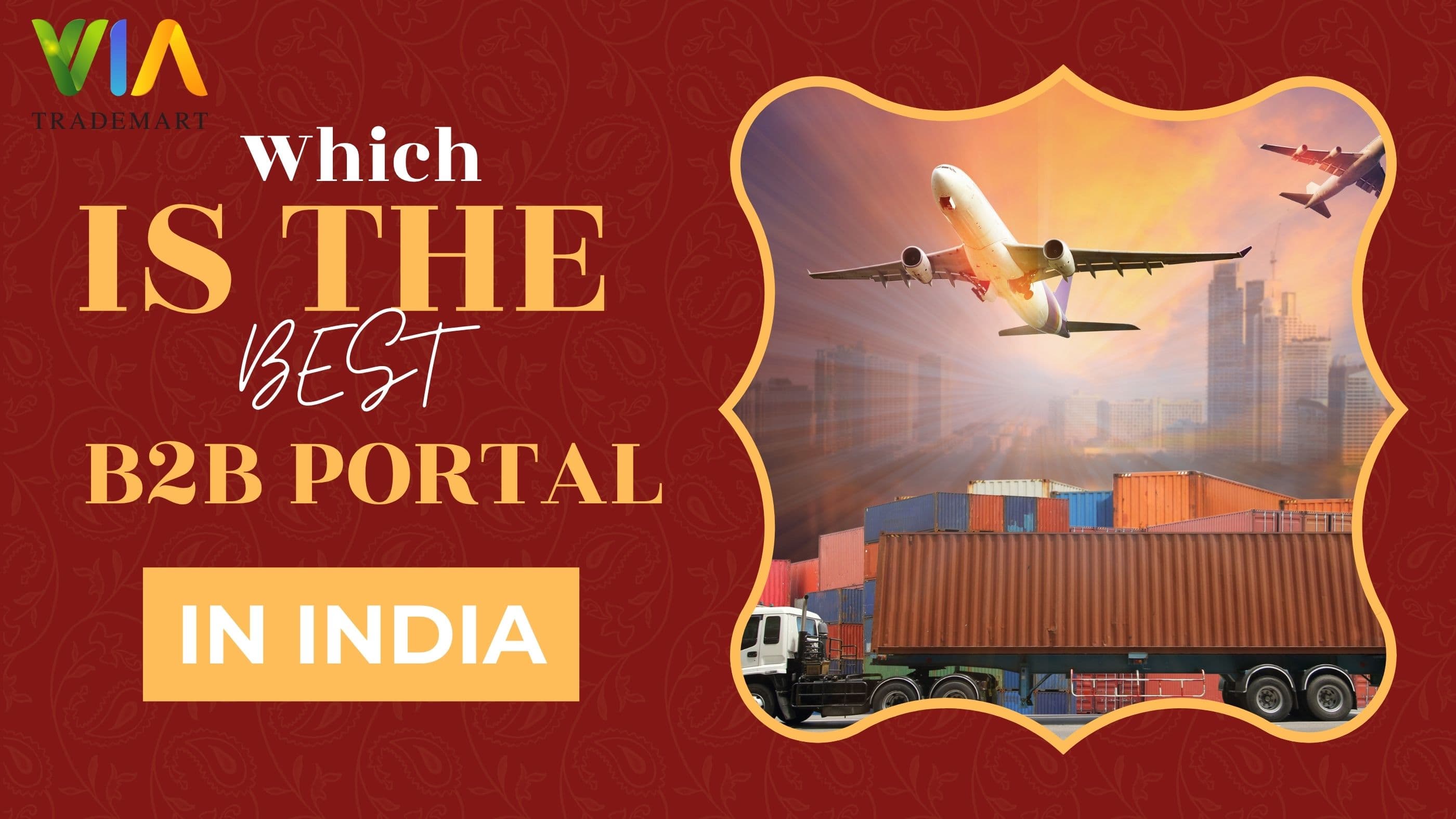Japan remains one of the world’s most dynamic trading nations. Despite global supply-chain shocks, energy price swings and geopolitics, Japan’s role as a high-value manufacturer and an import-dependent economy continues to shape global trade flows. This deep-dive snapshot for 2025–26 explains the top 10 Japanese exports and top 10 Japanese imports, highlights trade partners and trends, and gives practical advice for B2B traders — including how Indian exporters can win business in Japan (and how platforms like Viatrademart can help).
Quick headline numbers (context for 2024–25 → 2025)
- Japan’s merchandise exports were in the $700–720 billion range in recent annual data, while imports were somewhat larger, putting total trade near the $1.4–1.5 trillion mark depending on the source and year.
- Major trading partners include China, the United States, and Australia, reflecting both upstream inputs (energy, raw materials) and export markets for manufactured goods.
(These headline figures vary slightly across official and commercial data sources due to methodology and time cut-offs — the citations above are the most recent public datasets and press reports.)
Why Japan’s import & export mix matters
Japan is capital- and technology-intensive, importing large volumes of energy and raw materials while exporting high-value manufactured items — vehicles, precision machinery, and electronic components. For B2B firms, this means:
- Sellers of precision parts, specialized machinery, and high-quality manufactured components find steady demand in Japanese supply chains.
- Suppliers of commodities (especially energy) and food products can also access strong, price-sensitive markets.
- Service providers (logistics, customs brokerage, localization, marketing) play a crucial role in easing market entry.
Top 10 Japanese exports (what Japan sells to the world)
Below are the export product categories that consistently top Japan’s merchandise export list. The order reflects aggregate importance (value and strategic impact) in 2024–25 and early 2025 trends.
- Vehicles (passenger cars, parts)
Japan’s automotive sector is its largest export value contributor — cars, trucks, and high-value components continue to drive sizeable export receipts.
- Machinery (including computers, industrial equipment)
Heavy and precision machinery for manufacturing, plus computer-related equipment, are large export items.
- Electrical machinery & electronic components (semiconductors, parts)
Japan supplies components and electronic parts used worldwide in consumer electronics and industrial equipment.
- Optical & medical instruments
Precision instruments, medical devices and optics are notable exporters — high per-unit value and strong global demand.
- Iron & steel products
Japan exports processed steel and specialty alloys used in construction, machinery and automotive industries.
- Plastics & related articles
High-quality plastics and engineering plastics for industrial use are important export categories.
- Organic chemicals & specialty chemicals
Precursors for pharmaceuticals, electronics and specialty manufacturing.
- Ships and marine equipment
Japan’s high-end shipbuilding and marine engineering contribute to export revenues.
- Pharmaceuticals & medical supplies
Advanced medicines and medical supplies, a growing area as global demand rises.
- Food products (processed foods, seafood)
Japanese food exports have been rising recently, with record levels in some categories despite disruptions in particular export destinations.
Context & data note: Several independent trade trackers and national statistics place the combined value of machinery, electrical equipment and vehicles as the largest share of exports — typically representing 30–40% of Japan’s total export basket.
Top 10 Japanese imports (what Japan buys from the world)
Japan imports both commodities and high-tech inputs. The top import groups for 2024–25 into 2025 are:
- Mineral fuels, oils and distillation products (crude oil, LNG)
Energy imports (crude oil, LNG) are historically the single largest commodity import for Japan due to limited domestic fossil fuel resources. - Machinery and mechanical appliances (inputs for manufacturing)
- Electrical machinery and electronic parts (components for assembly)
- Medical, optical and precision instruments (specialized inputs)
- Foodstuffs and agricultural products
Japan imports food staples, grains and seafood (and also re-exports processed food items). Food imports are important for domestic consumption and industrial food processing. - Iron and steel (raw and semi-processed)
- Plastics and polymers (feedstocks for manufacturing)
- Organic chemicals and industrial chemicals
Used in pharmaceuticals, electronics and manufacturing. - Textiles & raw apparel materials
- Raw materials & ores (metals, minerals)
Data spotlight: Mineral fuels and oils usually top the import value list because of high unit price even when volumes vary. Trading Economics and Japan’s trade datasets confirm energy-related groups as top import categories in recent periods.
Top trading partners (snapshot)
- China — largest single partner for both imports and exports (regional supply chains)
- United States — major export destination for vehicles, machinery and electronics.
- Australia — important for energy and raw material supplies (coal, LNG, minerals).
These partner relationships explain why Japan both imports large commodity volumes (energy, minerals) and exports high-value manufactured goods.
Recent trends to watch (2024 → 2025 signals)
- Export recovery & sectoral strength — Japanese exports recovered in several months of 2025 (machinery, cars, medical equipment), with export growth reported in early 2025.
- Food exports rising — a notable trend: Japan’s agricultural, forestry and fishery exports hit record highs in 2024 despite setbacks in certain Asian markets. That opens opportunities for specialty food exporters and B2B food trade.
- Energy import volatility — shifts in LNG and oil prices and sourcing (greater Australian and Middle East volumes) affect import bills and trade balance
Practical guide: How Indian exporters can target Japanese buyers (step-by-step)
Japan’s market requires high quality, reliability, punctual documentation and often localized sales support. Below is a practical 9-step B2B playbook.
1. Select the right product categories
Target Japanese demand: auto components, industrial machinery parts, specialty chemicals, precision tools, processed foods (HACCP-compliant) and IT/software services for manufacturing. Use the lists above to prioritize.
2. Meet Japanese quality & compliance requirements
- Obtain required certifications (JIS, ISO, HACCP, GMP as relevant).
- Ensure product testing, materials documentation and supply-chain traceability.
3. Prepare Japan-ready product sheets
- Bilingual product catalog (English + Japanese).
- Clear technical specs, part numbers, and packaging information.
4. Price competitively but transparently
- Offer EXW, FOB and CIF quotes to show flexibility.
- Clarify lead times and MOQ (minimum order quantities).
5. Use trade platforms & B2B portals (why Viatrademart helps)
- List products on reputable B2B portals that have Japan-facing buyers. Viatrademart is one such portal in India designed to connect Indian manufacturers and exporters with global buyers. A few ways Viatrademart helps:
- Verified buyer-seller matching and Indian export focus.
- Product listing and category exposure to international buyers.
- Support for RFQs (Request for Quotation) and lead management.
If your goal is to sell into Japan, list targeted categories on Viatrademart (with detailed specs and packaging/volume options) — it simplifies discovery and qualifies buyers. (Promotional note: Viatrademart is an effective B2B portal for Indian exporters seeking global leads.)
6. Local partnerships & distributors
- Japanese buyers prefer local distributors or agents who handle customs, language and after-sales support.
- Consider tie-ups with local sales partners or a small representative office.
7. Logistics & customs readiness
- Understand HS codes, tariff schedules, and required documents (invoice, packing list, certificate of origin, phytosanitary certificates for food).
- Use experienced freight forwarders familiar with Japan routes.
8. Attend B2B trade shows & virtual events
- Trade fairs (machinery, food, electronics) and online buyer-seller meetings accelerate trust-building.
9. Offer small pilots & samples
- Japanese buyers often request evaluation samples and small pilot orders before scaling.
Actionable tactics for B2B lead generation to Japanese buyers (digital + offline)
- SEO & content: Publish Japan-targeted landing pages (e.g., “Auto parts supplier to Japan – EXW Mumbai”) and use the keywords Japanese imports/Japanese exports in context for visibility.
- List on Viatrademart: Create targeted listings, use RFQ features, and respond promptly to buyer inquiries.
- Use trade data: Cite HS codes and trade statistics in proposals (buyers appreciate specificity).
- LinkedIn outreach: Connect with procurement managers and engineers in Japanese firms; share product specs and samples.
- Localized catalogs: Provide translated catalogs and packaging info.
Example: How to build a single effective product listing (checklist)
- Title: “Precision CNC Turned Parts — Automotive Grade — EXW / FOB — MOQ 500”
- Short description: 40–60 words including HS code and key specs.
- Detailed specs: Materials, tolerances, surface finish, certifications.
- MOQ & pricing tiers (sample price, 1,000-unit price).
- Lead time, packaging & shipping options.
- High-resolution images and a short factory video.
- Contact & samples policy.
- Upload to Viatrademart and promote via InMail/Email to targeted Japanese buyers.
Risks & considerations
- Currency fluctuations: Yen volatility can affect margins — consider FX hedging for larger deals.
- Compliance & non-tariff barriers: Japan has strict sanitary and technical standards for some product classes.
- Competition: Japanese buyers may source regionally (China, Korea) for price-sensitive items; Indian exporters should emphasize differentiation (quality, lead-times, certifications).
Case use: Indian processed food into Japan
Recent data shows Japan’s food exports grew despite some market disruptions, indicating resilient demand for specialty food. Indian exporters in spices, ready-to-eat goods and processed seafood can:
- Secure JAS/HACCP certificates, provide shelf-life data and lab test reports.
- Use Viatrademart to get RFQs from Japanese distributors looking for curated SKU lists for specialty stores and restaurants.
(Statistic source: Japan’s agricultural/food exports trend reported growth in 2024, underscoring rising global appetite for Japanese food while opening reciprocal opportunities in food trade and specialty imports.)
Data-driven outlook for 2025–26
- Expect electronics, vehicles and machinery to remain the backbone of Japanese exports, while energy and food will continue to dominate Japanese imports in value terms. Recent months in 2025 showed upticks in exports and continued importance of import energy volumes as global market dynamics shift.
How Viatrademart can accelerate your Japan entry (practical steps)
- Create a Verified Supplier Profile — list capabilities, certifications and product verticals.
- Publish Targeted RFQs — buyers in Japan often send RFQs for component lists; Viatrademart’s RFQ system helps surface those buyers.
- Use Buyer Matchmaking — respond fast; Viatrademart’s team can help route inquiries to your sales team.
- Leverage Analytics — monitor which Japanese buyers view your listings and tailor outreach.
- Support Services — many B2B portals (including Viatrademart) provide export-related guidance such as HS code labeling, packaging advice and documentation checklists.
Bottom line: for Indian companies serious about Japanese trade, combining data-driven product targeting with a robust B2B platform such as Viatrademart makes market entry faster, more professional, and trackable.
Final checklist — launch plan to win Japanese buyers (30–90 days)
- Pick 2–3 prioritized product SKUs with matching HS codes and quality certifications.
- Create bilingual catalogs and upload 10 product listings to Viatrademart.
- Set up sample & pilot order process (clear pricing/returns).
- Identify 20 target Japanese buyers (via trade data + Viatrademart leads).`
- Run outreach (email + LinkedIn + Viatrademart messaging).
- Attend a virtual trade meet or schedule discovery calls.
- Finalize logistics partners and documentation templates.
Resources & sources
- Japan trade statistics and commodity breakdowns (Ministry of Finance / Japan Customs; national trade datasets and public CSVs).
- Recent export/import totals and analysis (Trading Economics, Tradeimex, Reuters coverage of 2025 export trends).
- Partner-country and commodity snapshots (World Bank / WITS datasets).
Closing: Japan trade is opportunity-rich — but selective
Japan’s trade mix offers clear opportunities for exporters who can match quality, reliability, and documentation. For Indian businesses, the fastest route to qualified buyers is to combine data-driven targeting (use the HS-based product lists above), marketplace visibility (list on Viatrademart with full specs), and dependable logistics/partner support. Start small (pilot orders), demonstrate excellence, and scale — that’s the proven path to winning long-term Japanese contracts.












